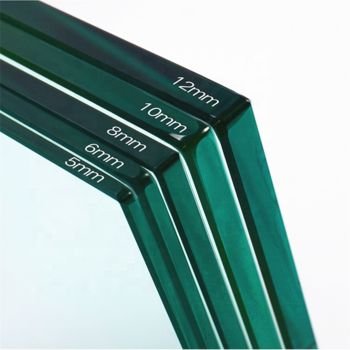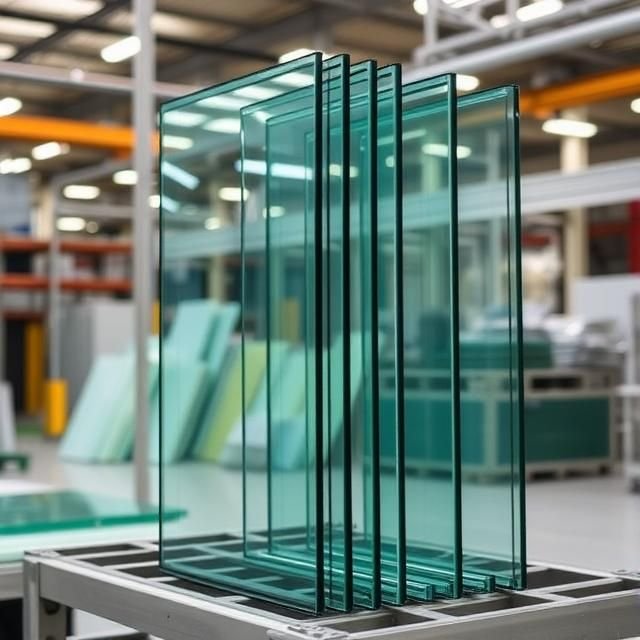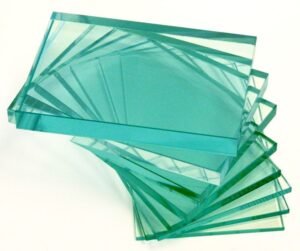Building Tempered Glass
Modern architecture is defined by innovation, transparency, and durability. One of the most significant materials that bring these qualities together is tempered glass, also known as toughened glass. In the construction industry, building tempered glass is widely used for windows, facades, doors, railings, and partitions. Its unique properties of strength, safety, and style make it an indispensable element in both residential and commercial projects.
Unlike ordinary glass, tempered glass undergoes a controlled thermal treatment process that increases its strength up to five times. This makes it highly suitable for buildings, where safety, weather resistance, and aesthetics are critical.
What is Building Tempered Glass?
Building tempered glass is a special type of safety glass manufactured by heating ordinary glass to high temperatures (around 650°C) and cooling it rapidly. This process creates surface compression and interior tension, making the glass much stronger than untreated float glass.
When broken, tempered glass shatters into small, blunt fragments instead of sharp shards, reducing the risk of serious injury—an essential safety feature for buildings with high glass usage.

Key Features of Building Tempered Glass
High Strength
4–5 times stronger than regular float glass.
Can withstand high pressure, wind loads, and impacts.
Safety Glass
Breaks into small, harmless pieces instead of dangerous shards.
Reduces risk of injury in accidents.
Heat Resistance
Withstands sudden temperature changes up to 250°C.
Suitable for buildings exposed to extreme climates.
Design Versatility
Available in clear, frosted, tinted, laminated, and coated varieties.
Fits modern architecture requirements.
Durability
Resistant to scratches, bending, and weather damage.
Benefits of Using Building Tempered Glass
1. Safety & Security
Tempered glass is recognized as a safety glass by international standards. It is widely used in high-rise buildings, malls, airports, and offices where occupant safety is a top priority.
2. Enhanced Durability
Its strength makes it resistant to wind pressure, heavy loads, and accidental impacts—ideal for skyscrapers and exterior facades.
3. Modern Architectural Appeal
Glass brings natural light into spaces while maintaining a sleek, modern aesthetic. Frameless tempered glass designs add elegance and openness to structures.
4. Energy Efficiency
When combined with coatings or laminations, tempered glass improves insulation, reducing heating and cooling costs in buildings.
5. Weather Resistance
Tempered glass performs well in all climates, resisting heat, humidity, rain, and even storms.
Applications of Building Tempered Glass
Glass Facades & Curtain Walls
Large tempered glass panels create stunning building exteriors.
Provides transparency and a contemporary design.
Windows & Doors
Safer and more durable than ordinary window glass.
Used in sliding, hinged, or automatic glass doors.
Balconies & Railings
Frameless tempered glass railings offer safety with an unobstructed view.
Skylights & Roof Panels
Tempered glass allows natural light while withstanding external forces.
Partitions & Interiors
Used in offices, malls, and residential spaces for sleek partitions.
Elevator Panels & Staircases
Strong enough to be used in high-traffic areas.
Public & Commercial Spaces
Airports, malls, and hospitals rely on tempered glass for durability and aesthetics.


Types of Building Tempered Glass
Clear Tempered Glass
Transparent and simple, suitable for windows and facades.
Frosted Tempered Glass
Provides privacy while allowing light transmission.
Tinted Tempered Glass
Available in green, blue, bronze, or grey shades for style and solar control.
Reflective Tempered Glass
Reflects heat and light, improving energy efficiency.
Laminated Tempered Glass
Combines two sheets with a safety film, offering added security.
Why Choose Building Tempered Glass?
Stronger & Safer than regular glass.
Adds luxury and transparency to modern structures.
Meets international safety standards for construction.
Can be customized in size, shape, thickness, and color.
Suitable for high-rise, residential, and commercial applications.
Maintenance & Care
Regular Cleaning
Use a mild glass cleaner and a soft microfiber cloth.
Avoid abrasive materials that may scratch coatings.
Frame & Seal Check
Ensure aluminum or steel frames are in good condition to support heavy glass.
Professional Installation
Always use experienced professionals to install tempered glass safely.
Conclusion
Building tempered glass is more than just a construction material—it is the backbone of modern architecture. From stunning skyscraper facades to safe and stylish interior partitions, tempered glass offers a blend of safety, durability, and elegance.
With its resistance to impact, heat, and harsh weather, tempered glass is a smart investment for any construction project. It not only enhances the safety of the building but also elevates its overall aesthetic value, creating structures that are modern, sustainable, and timeless.
✨ Whether it’s a commercial tower, a luxury villa, or an office complex, tempered glass is the future of building design.